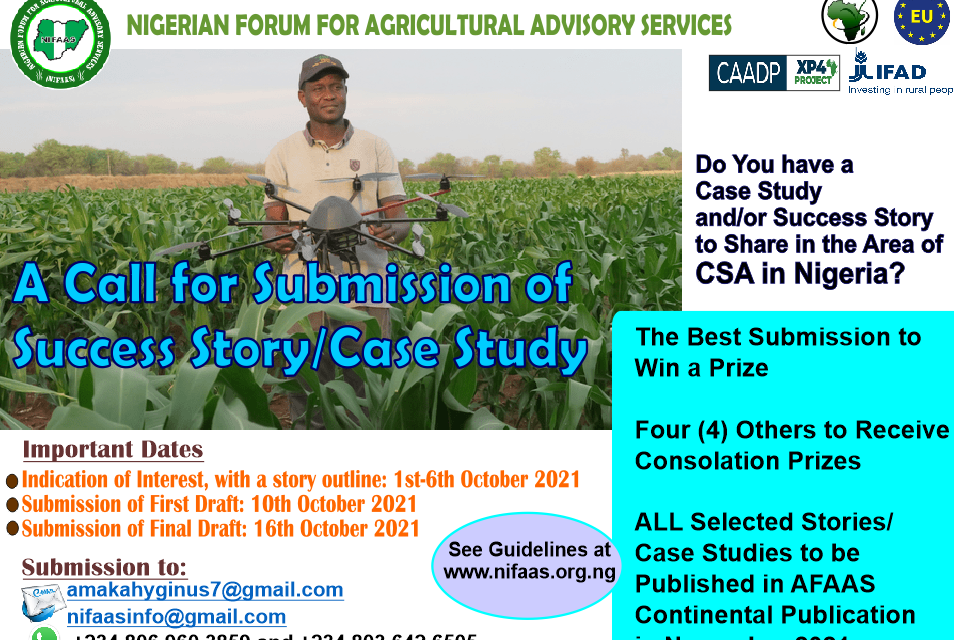NIFAAS is Calling for Submission of CSA Case Studies/ Successful stories
Do You have a Case Study and/or Success Story to Share in the Area of CSA in Nigeria? This is an Opportunity Can’t Miss!
Tantalizing!
- The Best Submission to Win a Prize
- Four (4) Others to Receive Consolation Prizes
- ALL Selected Stories/ Case Studies to be Published in AFAAS Continental Publication in November 2021
Important Dates
- Indication of Interest, with a story outline: 1st-6th October 2021
- Submission of First Draft: 10th October 2021
- Submission of Final Draft: 16th October 2021
Make Submission to:
WHATSAPP Message to: +234 806 960 3859 and +234 803 642 6505
The Thematic Areas are:
1 crop production
2 Biological control
3 Conservation Agriculture
4 Livestock Agriculture
5 Aquaponics
6Farming systems
7 precision Agriculture
8 market linkages/ marketing information
9 Remote sensing
Guidelines for Writing
- The story must have a degree of innovativeness and will be related to climate smart agricultural initiatives
- The story must not be more than one thousand and five hundred (1,500) words
- It should be logical and based on experience rather than mere fiction
- it should be concise and precise
- It should be appealing and written in a narrative form in formal English
- It should be written in such a way that it would interest readers at first sight
- Supported with data, figures and pictures
- It must be a new story/ not published anywhere before (Repackaged story from a new perspective may also be considered, as long as it is a personal experience)
- Must be related to CSA and from the thematic areas above
- Embedded videos (as evidence) are also encouraged, where necessary.
TEMPLATE
| Name author | |
| Tentative title | ONE idea: new, relevant, different (marketing terms) |
| Presentation |
|
| Introduction
(not more than 10% of length of article)) |
|
| Description (approx. 25%) |
|
| Activities |
|
| Results/outputs |
|
| Difficulties |
|
| Analysis (at least 40%, preferably 50% ) |
|
| Impact / participation / etc. |
|
| Success factors |
|
| Constraints |
|
| Sustainability |
|
| Conclusions | |
| Lessons
(approx. 10%) |
|
| References | |
| Annexes |
WORD Count: 1,500 words maximum





Recent Comments